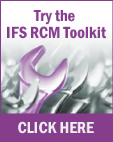The traditional approach to maintenance planning usually involves a preventive regime rather than one based on intervention and repair when there actually is a failure.
Maintenance is not what it used to be! The traditional approach to maintenance planning usually involves a preventive regime rather than one based on intervention and repair when there actually is a failure. But time and time again, we can see that this approach can often compound the situation and actually introduce failure.
Enter 21st Century maintenance in the shape of Reliability Centered Maintenance (RCM). This is viewed as one of the key methods allowing maintenance engineers to do more with less at the same time as minimizing risk. In a nutshell, RCM provides a greater understanding of the level of risk that an organization is currently managing, as well as supporting the establishment of capital maintenance regimes, thereby increasing cost effectiveness and equipment uptime. It also provides a safe and defensible maintenance strategy that offers optimal levels of maintenance and safety for assets while generating a financial ROI and conforming to regulatory compliance.
RCM can help with maintenance in any industry but in what are often difficult geographies and environmental locations, it is in aerospace and defense (A&D) where optimum levels of safety are of paramount performance, that RCM has a serious role to play. And implementing an RCM solution is not necessarily a complex or procedure – particularly if an organization follows seven easy steps.
 7 steps to successful RCM:
7 steps to successful RCM:
- Define the maintenance problem and gather basic system information;
- Define the functions and desired performance standards for each item of equipment;
- Define all the ways in which it can fail to deliver the required performance;
- Establish the causes of failure;
- Record what happens when each failure mode occurs;
- Establish a strategy for dealing with each failure mode based on an assessment of failure consequences;
- Assess the applicability of different types of failure prevention and establish task frequencies.
The Royal Navy has increased availability whilst reducing their maintenance costs
This approach worked very well for the Royal Navy, which, through implementing an IFS RCM solution was able to reduce maintenance whilst improving safety and operational availability, even working with safety-critical assets such as nuclear submarines.
This new system brought substantial savings overall and yielded even larger savings on systems such as AC power generation & distribution, steam system, and diesel generator maintenance through to HP air system, radar, lubrication oil system and sonar maintenance.
Maximizing maintenance
RCM is all about taking a systematic approach, putting science into the planning of your maintenance, and is vitally important for any A&D company, mainly because of the nature of the assets that A&D firms have to manage that bring more complex challenges in terms of safety and reliability compared to other industries.
By minimizing unnecessary maintenance events and therefore costs, and at the same time minimizing the unnecessary overuse of maintenance resources, RCM enables organizations to maximize the availability of operational systems and equipment.